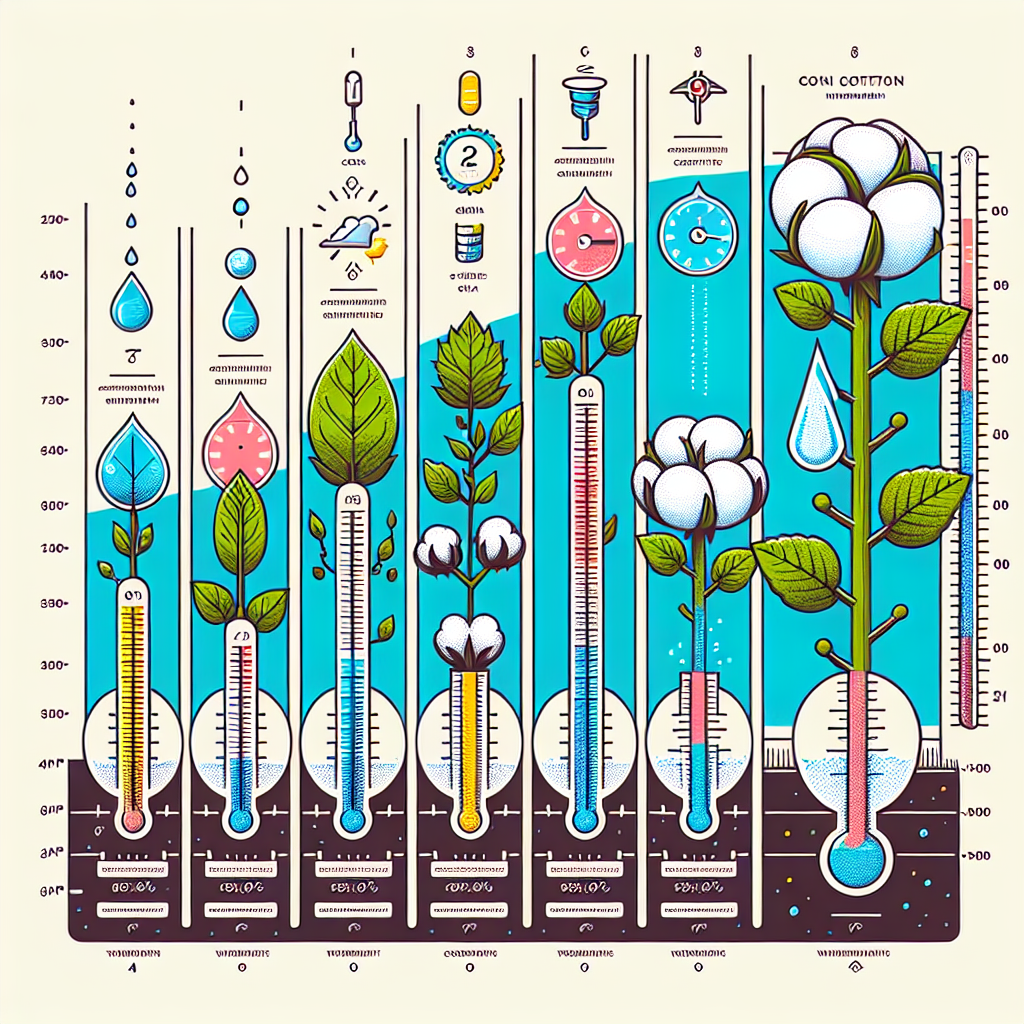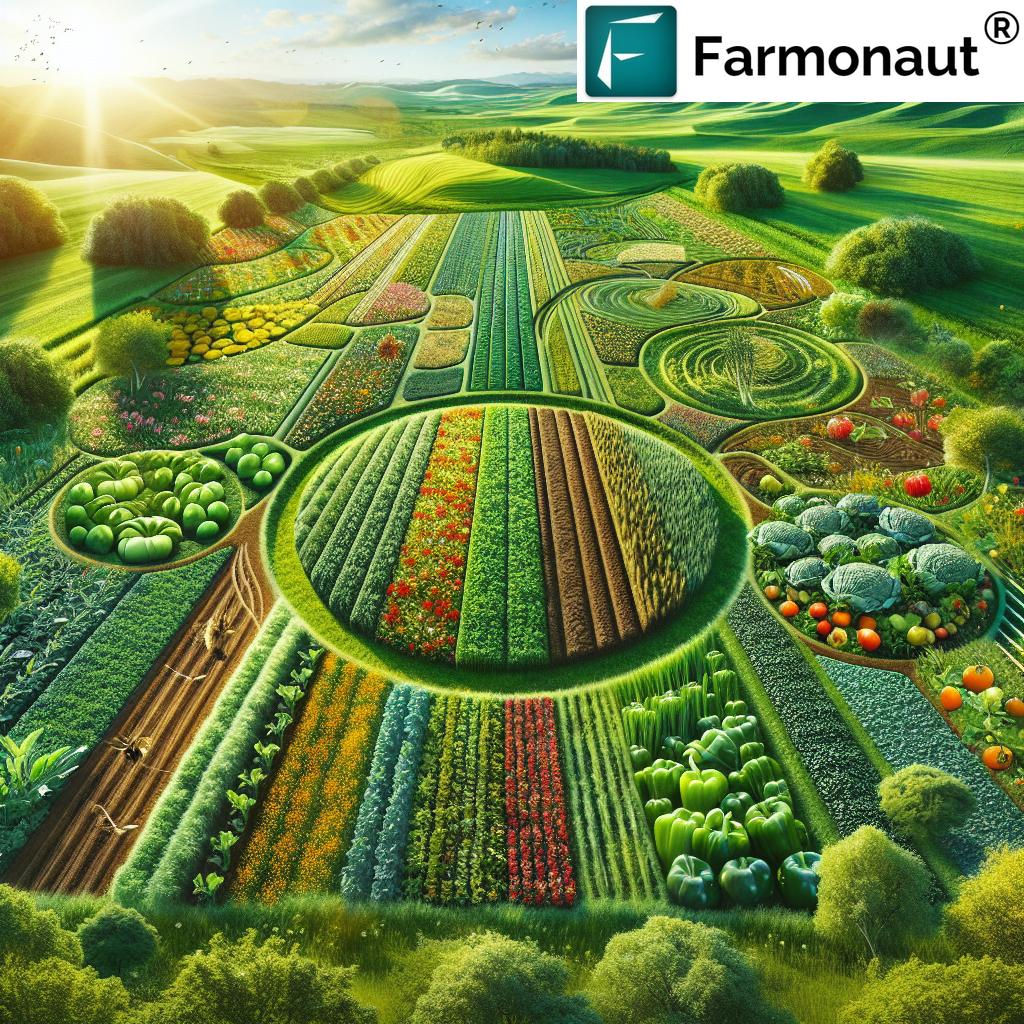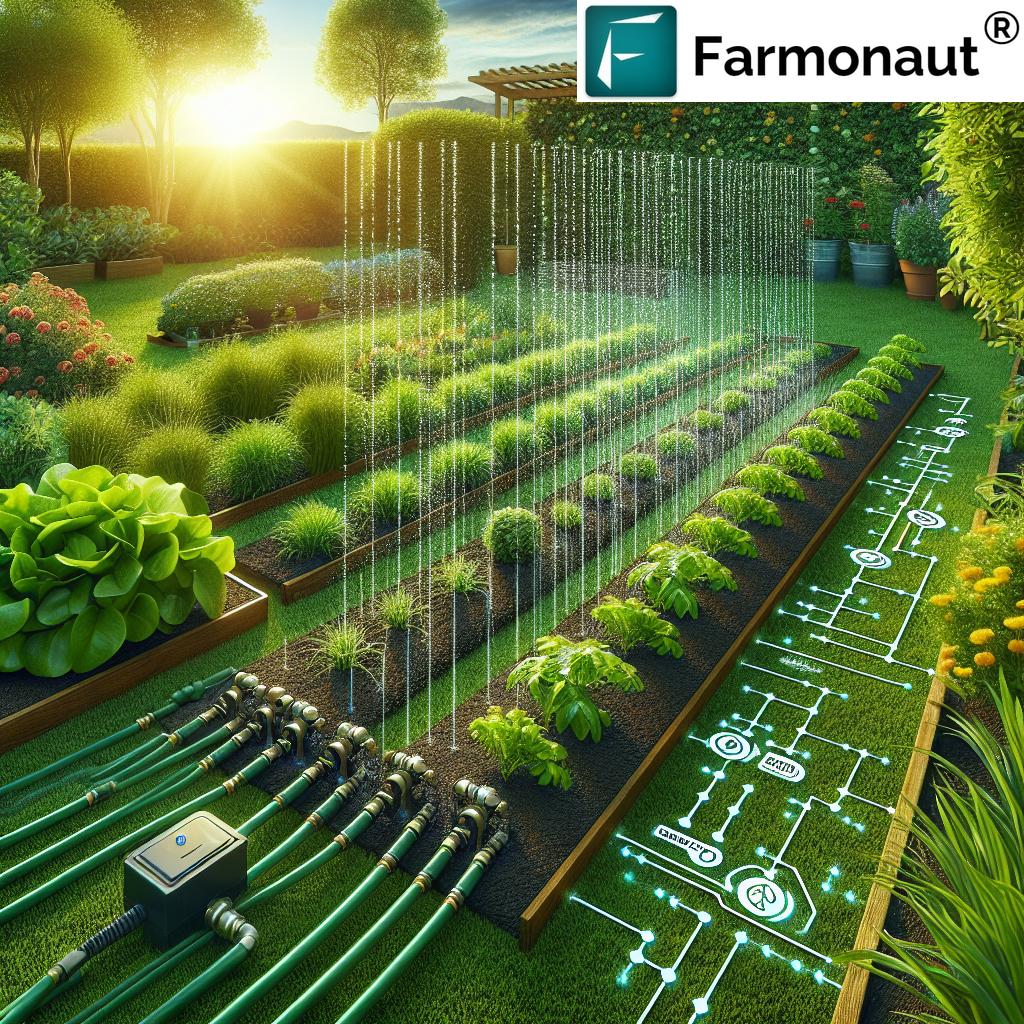Climate Resilience & Sustainability: 7 Farming Solutions
Table of Contents
- Introduction to Climate Resilience & Sustainability in Agriculture
- What is Climate Resilience and Sustainability in Agriculture?
- Why 2025 is a Defining Year for Agriculture
- The Seven Farming Solutions
- 1. Crop Diversification and Improved Crop Varieties
- 2. Agroforestry & Integrating Trees on Farms
- 3. Soil Health Management Practices
- 4. Precision Water Management & Innovations
- 5. Integrated Pest and Disease Management
- 6. Socio-Economic Support & Policy Interventions
- 7. Transition to Regenerative Agriculture
- Comparative Table: Solutions and Their Impacts
- Farmonaut Technology: Satellite-Powered Support for Climate Resilience
- Subscription & Access: Farmonaut for Your Farming Future
- FAQs: Climate Resilience and Sustainability in Agriculture
- Conclusion: A Secure and Sustainable Agricultural Future
Introduction to Climate Resilience & Sustainability in Agriculture
The conversation around climate resilience and sustainability in agriculture has never been more vital. As we approach 2025, the agricultural sector is grappling with escalating climate-related impacts — from more frequent weather shocks and unpredictable rainfall patterns to rising incidences of pests, diseases, and soil degradation. These pressing challenges directly threaten food security, ecosystem balance, and agricultural productivity globally.
Building a resilient and sustainable approach isn’t optional; it has become imperative. The frontline farmers—from smallholder growers in Asia and Africa to expansive North American and European agriculture systems—face the same core issue: adapting and thriving despite climate shocks. By integrating soil, water, crop, and pest management strategies, we can shape a secure future and ensure agriculture continues to sustain humanity without compromising the needs of future generations.
What is Climate Resilience and Sustainability in Agriculture?
Climate resilience in agriculture refers to the ability of farming systems to anticipate, prepare for, respond to, and recover from climate-related shocks while keeping productivity and ecosystem health intact. It’s about proactive adaptation—not just surviving the next drought or pest outbreak, but building the capacities to thrive, season after season.
On the other hand, sustainability is the principle that ensures agricultural systems meet present food and resource needs without compromising the prospects of future generations. This includes integrating environmental health, economic viability, and social equity—the three pillars that make up sustainable development.
Together, these concepts are increasingly intertwined: climate change and sustainability shape modern agriculture’s present and future, requiring systemic changes in how we manage soil, water, crops, pests, and economic-social frameworks.
Why 2025 is a Defining Year for Agriculture
As global climate impacts and weather shocks continue to mount, 2025 is shaping up to be a tipping point. Climate resilience and sustainability are essential for the survival and prosperity of the agricultural sector. Societies worldwide must now:
- Address unpredictable weather patterns, including more frequent droughts, floods, and heatwaves.
- Respond to shifting growing seasons that disrupt traditional planting and harvesting cycles.
- Manage increased incidences of pests and diseases driven by altered ecosystems and weather.
- Mitigate ongoing soil degradation and loss of organic matter.
- Sustain food security for growing populations in the face of escalating challenges.
By addressing these challenges with resilient, evidence-backed, and innovative solutions, we can safeguard both food systems and the natural ecosystems agriculture depends upon.
Climate Resilience & Sustainability: 7 Farming Solutions
Below, we present the seven most impactful and innovative solutions for climate resilience and sustainability in agriculture for 2025 and beyond. Each solution is explored from the lens of soil, water, crop, and pest management, with a sharp focus on resilience against stress, improved productivity, ecosystem health, and future food system security.
1. Crop Diversification and Improved Crop Varieties
Main Objective: Reduce dependency on single crops vulnerable to climate shocks by emphasizing diversification and innovation.
Cultivating a wide array of crop species and varieties—especially drought-tolerant, heat-resistant, and pest-resistant types—reduces risk and ensures consistent productivity even when unpredictable weather patterns or pests emerge. In 2025, advanced breeding techniques and genomics continue to accelerate the development and accessibility of resilient varieties across global regions.
- Crop diversification minimizes risk: If one crop fails because of unforeseen shocks (drought, pest outbreak), other crops compensate for the loss, sustaining food and income.
- Reduced pest and disease pressure: Mixing crops can interrupt pest life cycles and create a less favorable environment for disease spread.
- Genetically improved seeds: These varieties are tailored for climate stress, such as higher heats, drought, or heavier rains.
Incorporate improved varieties and diverse rotations as a foundation of your resilient farm system.
Farmonaut delivers real-time, AI-driven crop health monitoring via satellite, helping users track diversified fields efficiently, detect early signs of stress, and make data-backed cropping decisions. Explore our Large Scale Farm Management Solution, perfect for monitoring multiple crops across varied fields.
2. Agroforestry & Integrating Trees on Farms
Main Objective: Enhance biodiversity, carbon sequestration, and ecosystem functions by integrating trees with crops and/or livestock.
Agroforestry—the practice of combining trees, crops, and sometimes livestock on the same land—is a proven strategy for sustainability and resilience. Trees provide shade that mitigates heat stress for animals and sensitive crops, reduce soil erosion, and improve water retention in soils.
- Improved biodiversity: Trees create habitats for beneficial insects, wildlife, and natural pest predators.
- Ecological balance: By boosting plant diversity, farms become more resilient to pest outbreaks and less reliant on chemical controls.
- Carbon sequestration: Trees absorb and store carbon dioxide, directly contributing to greenhouse gas mitigation.
- Enhanced soil health: Trees’ root systems improve soil structure and organic matter.
With Farmonaut’s real-time satellite monitoring, users can map, monitor, and manage their agroforestry landscapes—tracking tree cover, soil moisture, and vegetation health—all directly from the web or mobile app.
Implement Farmonaut’s Crop Plantation & Forest Advisory to design agroforestry plans suited to your farm’s climate and ecological context.
3. Soil Health Management Practices
Main Objective: Build resilient, productive soils that can withstand irregular rainfall, drought, and erosion, and sustain crop productivity.
Healthy soils are the cornerstone of climate resilience and sustainability; they store carbon, retain water, reduce dependency on agrochemicals, and sustain yields in the face of stress.
- Conservation tillage: Reduces soil disturbance, limits erosion, and improves soil structure.
- Cover cropping: Planting cover crops increases organic matter, suppresses weeds, improves water retention, and fixes nitrogen.
- Organic amendments: Additions like compost, manure, or biochar increase soil fertility, matter, and biodiversity.
- Soil carbon management: Healthy soils sequester more carbon, offsetting greenhouse gas emissions.
Monitor soil moisture and organic carbon changes using advanced tools like Farmonaut’s satellite-based soil monitoring for year-round actionable insights. This supports adaptive management and maximizes resilience.
Learn more about how soil carbon monitoring with Farmonaut’s Carbon Footprinting Solutions can count towards your farm’s climate mitigation efforts.
4. Precision Water Management & Innovations
Main Objective: Maximize water use efficiency to sustain crops during droughts, irregular rainfall, and scarce water resources.
As climate change intensifies, effective irrigation and water management is more critical than ever. Innovative technologies are empowering farmers to do more with less, ensuring every drop supports productivity.
- Precision irrigation: Systems like drip irrigation or soil moisture-sensor-triggered watering target water to roots, minimizing waste and maximizing uptake.
- AI- and satellite-driven water stress mapping: Proactively detects drought risks and water stress zones before crop yield is compromised.
- Rainwater harvesting and micro-reservoirs: Capture and store rainfall for use during dry periods.
According to industry benchmarks, such approaches can reduce agricultural water use by 40% by 2025, while maintaining or boosting crop yields.
With Farmonaut’s NDWI (Normalized Difference Water Index) and soil moisture maps, farmers can monitor water availability and distribution exactly where it counts—across every field and zone. Explore the Farmonaut API for water and soil analytics integration or check API Developer Docs.
5. Integrated Pest and Disease Management (IPM)
Main Objective: Reduce dependency on chemicals, safeguard ecosystem health, and increase resilience to increasing pest and disease pressures.
Rising temperatures and shifting seasons are driving increased incidence and movement of pests and diseases. Only an integrated approach—blending biological control, crop rotation, resistant varieties, habitat management, and precise pesticide use—can keep farms secure and sustainable.
- Biological controls: Introduce natural predators, parasitoids, and beneficial fungi/bacteria to keep pest populations in check.
- Minimize pesticide use: Apply chemicals only when truly necessary, and in a targeted, monitored fashion to protect beneficial insects and the wider ecosystem.
- Early detection with technology: Use remote sensing, AI, and satellite data to spot outbreaks and predict risks before they escalate.
- Habitat management: Maintain non-crop habitats (like hedgerows or flower strips) that support beneficial species, further balancing agroecosystems.
IPM reduces costs, environmental impacts, crop losses, and residual toxicity—heightening both immediate and long-term resilience.
Farmonaut’s advisory systems and frequent vegetation health checks allow rapid intervention whenever stress, pest, or disease signals appear, empowering transparency and traceability for safe, eco-labeled crops.
6. Socio-Economic Support & Policy Interventions
Main Objective: Support and empower farmers and local communities with the tools, policies, and safety nets needed to adapt to climate shocks and changing markets.
Beyond technical practices, socio-economic support is essential for true sustainability. In 2025, the following approaches are vital:
- Capacity building: Farmer education, climate-smart extension services, and access to climate information (via digital platforms, mobile apps, and trusted advisory tools).
- Insurance and financial tools: Crop insurance and climate risk funds buffer farmers from appalling weather, pests, or disease-driven losses—driving investment in resilient practices.
- Accessible technology: Tools like Farmonaut’s apps and APIs lower the barrier to entry for advanced monitoring and advisory systems (Download on Android | iOS).
- Knowledge sharing: Strengthening of farmer networks, local co-operatives, and research hubs enables faster diffusion of best practices and innovations.
- Gender and social equity: Ensure equitable access to technologies, land, credit, and decision-making power for women and marginalized groups.
Consider Farmonaut’s crop loan and insurance solutions for advanced loan risk management using satellite-based evidence—a game-changer for both lenders and growers.
7. Transition to Regenerative Agriculture
Main Objective: Shift from sustaining soil and yield to actively regenerating ecosystems, restoring biodiversity, and exceeding climate mitigation targets.
Regenerative agriculture is far more than “doing less harm”—it’s a blueprint for revitalizing soils, drawing down carbon, and building ultra-resilient systems:
- Permanent ground cover and zero or reduced tillage: Keeps soils covered year-round, protecting from erosion and temperature extremes.
- Intensive integration of organic amendments: Boosts soil organic matter and microbial life.
- Diversification of crops and livestock: Not just a few species, but polycultures and multi-species grazing that mimic natural systems.
- Maximum root depth: Perennial crops and cover plants drive carbon deep below ground, where it’s stored for the long term.
- Measurable carbon sequestration, improved water and nutrient cycling, and increased farm profitability.
These measures make agriculture a net carbon sink, align with global greenhouse gas mitigation targets, and guarantee food security for generations.
See how regenerative farming is transforming the future: Regenerative Agriculture 2025 Video
Comparative Table: 7 Farming Solutions for Climate Resilience & Sustainability
| Solution Name | Main Objective | Implementation Method | Estimated Environmental Impact | Sustainability Benefit | Climate Resilience Score (1–5) |
|---|---|---|---|---|---|
| Crop Diversification & Improved Varieties | Reduce crop failure risk; maintain yields | Rotating 2–4 crops; planting stress-tolerant seeds | Up to 30% reduction in yield losses from climate shocks/pests | Biodiversity, reduced pest/disease impact | 4.5 |
| Agroforestry & Trees on Farms | Enhance ecosystem services, carbon sequestration | Plant 20–50 trees/ha; mixed systems with crops/livestock | 12–20 tCO₂/ha/year sequestered; 20% less erosion | Improved soil/water cycles; shade; habitat for wildlife | 5 |
| Soil Health Management | Increase soil fertility, water retention, carbon storage | No-till, cover cropping, compost, organic inputs | Soil organic matter +1%/yr; 10–58% yield increase | Reduced erosion/runoff; sustainable yields | 5 |
| Precision Water Management | Efficient use of water, reduce drought impact | Drip irrigation, sensors, satellite monitoring | 40% water use reduction; up to 25% higher production | Saves water; resilient during drought/irregular rainfall | 4.5 |
| Integrated Pest Management | Reduce chemical use, minimize crop losses | Biological/physical controls; targeted sprays; habitat | 20–30% less pesticide; 35% fewer crop losses | Healthier soils, biodiversity, safer food | 4.5 |
| Socio-Economic Support/Policy | Increase farm income stability and adaptation | Insurance, subsidies, education, tech, gender equity | 10–30% decrease in disaster-induced poverty | Economic resilience; social equity; innovation diffusion | 4 |
| Regenerative Agriculture | Restore ecosystem health; climate mitigation | Multi-layered no-till, cover, perennials, organic | >15 tCO₂/ha/yr capture, rapid biodiversity gain | Net carbon sink; climate, soils, food security | 5 |
Farmonaut Technology: Satellite-Powered Support for Climate Resilience & Sustainability
To truly accelerate climate resilience and sustainability in agriculture, advanced technology brings critical advantages. At Farmonaut, we are committed to making satellite insights affordable, accessible, and actionable for anyone working to build a future-ready, productive, and sustainable food system.
- Satellite-Based Crop Monitoring: Multispectral imagery, NDVI, NDWI, and other indices for real-time assessment of plant, soil, and water health on any scale.
- AI-Driven Advisor Systems (Jeevn AI): Expert recommendations based on dynamic field data, weather, crop stress signals, and pest/disease risk.
- Blockchain Traceability: Certifies supply chains, ensuring safer, more trustworthy produce reaches consumers. See Farmonaut’s Traceability Product Page.
- Environmental Impact Monitoring: Automated carbon accounting via satellite, supporting regenerative and low-emission agriculture. Farmonaut’s Carbon Footprinting provides farm-to-market sustainability metrics for reporting and compliance.
- APIs and Developer Docs: Seamlessly connect satellite-driven intelligence to your ag platform or farm management system. Learn about the API and check API docs.
Our affordable SaaS platform works on Android, iOS, browser, and API—scaling from individual smallholders to vast agribusiness and government agencies.
Subscription & Access: Farmonaut for Your Farming Future
Our subscription plans are tailored for individuals, businesses, and institutions. They offer flexible, real-time access to satellite farm insights, analytics, and climate advisory for every scale.
Contact us to determine the best plan for your needs—whether it’s supporting a single farm’s climate resilience, scaling to an agribusiness fleet, or wide-area government deployment.
FAQ: Climate Resilience and Sustainability in Agriculture (2025 Edition)
How does climate resilience differ from sustainability in agriculture?
Climate resilience refers to agriculture’s capacity to adapt to and recover from climate-related shocks while maintaining productivity and ecosystem health. Sustainability is a broader concept that ensures agriculture meets current needs without undermining the capacity of future generations. While closely related, resilience emphasizes shock-proofing systems, and sustainability emphasizes long-term balance across environmental, economic, and social dimensions.
What are the top practices to increase climate resilience in 2025?
1. Crop diversification and improved varieties,
2. Agroforestry,
3. Healthy soil management,
4. Precision water management,
5. Integrated pest management,
6. Socio-economic support via technology, insurance, and capacity building,
7. Transitioning to regenerative agriculture that restores ecosystems, stores more carbon, and reduces emissions.
How can technology support sustainable and resilient agriculture?
Satellite-driven data, AI advisories, blockchain traceability, and field-smart apps help farmers:
- Monitor crops and soils in real time
- Spot stress and risk zones early
- Deploy resources with precision
- Document sustainable practices for supply chain transparency
- Access climate information and adaptive advisories on-demand
Technologies like those offered by Farmonaut make these capabilities both affordable and accessible worldwide.
What is the estimated environmental impact of these 7 solutions?
Industry benchmarks project that, if adopted at scale by 2025:
- Crop diversification: Reduces yield losses by up to 30% in extreme weather years.
- Agroforestry: Can sequester 12–20 tCO₂/ha/year, improve biodiversity, and reduce soil erosion by up to 20%.
- Healthy soil management: Increases organic matter by up to 1% annually, boosting yields up to 58%.
- Precision water management: Reduces water usage by up to 40% while maintaining or increasing yields.
- IPM: Reduces pesticide use and crop losses by up to 35% while protecting wildlife and soil health.
What steps should I take first as a farmer aiming for climate resilience and sustainability?
1. Assess your current risk exposure (soils, water, crops, pests)
2. Begin crop diversification and integrate at least one aspect of agroforestry or cover cropping
3. Adopt water-saving technologies and monitor usage
4. Leverage farm technology like satellite-based platforms (such as Farmonaut’s Web or Mobile App) for ongoing monitoring
5. Engage in local farmer networks, share knowledge, and explore insurance/savings plans for added resilience
Conclusion: A Secure and Sustainable Agricultural Future
Climate resilience and sustainability are now at the heart of agriculture’s survival and its promise for tomorrow—in 2025 and far beyond.
By integrating crop diversification, agroforestry, healthy soils, efficient water use, integrated pest management, policy support, and regenerative principles, we build a shield against the uncertainties of climate while securing food, livelihoods, and planet health. Technology—especially satellite-driven, real-time insights—amplifies every solution, making resilience and sustainability actionable for all.
Let’s invest in proven solutions, accessible technologies, and inclusive frameworks so agriculture continues to feed the world, empower communities, and steward our environmental legacy.
Start your climate resilience and sustainability journey now—explore our monitoring and management solutions:
Or contact Farmonaut for detailed assessments, advisory, or business solutions tailored to your needs.
Together, we can ensure agriculture remains at the frontline of climate resilience and sustainability—feeding the world today and for generations to come.












